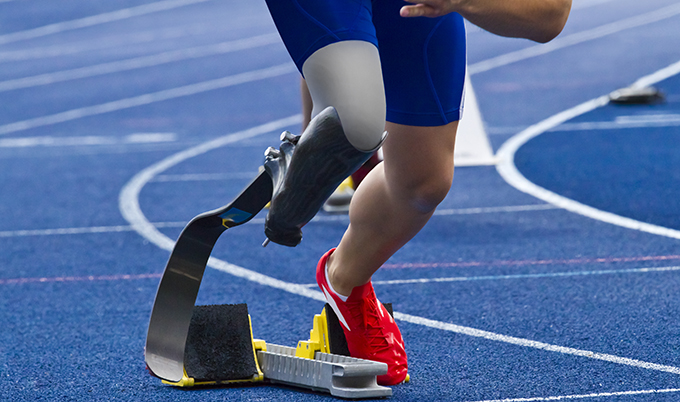Comment: why some disabled people are critical of
Comment: Why some disabled people are critical of the Paralympics
Published on: 14 September 2016
Writing for The Conversation, Professor Janice McLaughlin explains why the Paralympics isn't universally popular with disabled people.

What is the word you most associate with the Paralympics? For many people, the word “inspirational” comes to mind. Instead of disability being represented as a tragedy and disabled people as passive figures in need of charity and pity, here they are performing feats of startling physical endurance and amazing athletic ability. UK Paralympians, such as Jonnie Peacock, Sarah Storey, David Weir and Ellie Simmonds are, rightly, held up as role models for all to admire. So it may surprise you that some disabled people are sceptical about the benefits of the Paralympics. But what can possibly be wrong with disability sport being given such a high profile?
Not-so-level playing field
Like all elite sports, the Paralympics is struggling to keep hold of its core values: “determination, equality, inspiration and courage”. The most visible example of this comes with the banning of Russian athletes from the games after evidence of widespread state-sponsored doping emerged. Another is the increasing concern that countries are manipulating the Paralympian classification system, designed to ensure people are competing against others with similar levels of impairment, to gain unfair advantage.
The greater emphasis on professionalisation (and medal tables) is also leading to increasing inequalities between different countries. Running blades, one of the iconic symbols of the contemporary games, can cost between £4,000-£6,000 for a single blade, while bespoke sports wheelchairs cost thousands of pounds. It is hardly surprising then that disabled athletes from poorer countries struggle to compete.
The Paralympian hero
It is also notable which sports tend to gain the greatest coverage during the games. You are far more likely to come across athletes sprinting on running blades and team sports such as wheelchair rugby, than you are games such as Boccia. While, to some degree, the greater recognition for these sports echoes the popularity of their equivalents in the Olympics, it is hard not to notice that wheelchair rugby players and blade-legged sprinters have less visibly disabled bodies than those competing in Boccia.

Muscle power and technology come together to produce a story of disability being overcome by emphasising how similar the disabled athlete in running blades is to other non-disabled athletes, a combination that troubles disability campaigners. This is not to belittle the achievements of the high profile disabled athletes, but to explore what the differences in coverage say about which disabilities are easier to portray as heroic. Vogue Brazil provided a startling example of the celebration of normal or even ideal body norms within Paralympics coverage when they digitally altered images of non-disabled models to make them look as though they were amputees.
Social attitudes
Just how much do the games really contribute to a change in the social position of disabled people? Various campaigners argue not a lot, highlighting the experiences of disabled people within welfare austerity as strong evidence that disabled people face challenges that the Paralympics can do little to help with. While people may cheer Ellie Simmonds and David Weir, day-to-day experiences of abuse and hate crime directed towards disabled people show little evidence of being in decline.
This takes us back to the word: “inspiration”. Saying that the games and the athletes who compete are inspirational implies that disability should be overcome, that anyone can do whatever they want. If they can, why not you? This does offer a positive image of disability, but the risk is that it is assumed that those who do not appear to be trying to make the best of their situation are failing in some way. It also suggests that talk of barriers to success is an excuse. For some campaigners it also sends a message that those who minimise their disability (for example by using aids to walk rather than using a wheelchair) are more heroic than those who do not.
What does it take for a disabled person to be inspirational? While there is something amazing in what these athletes do and all the training and sacrifice it takes for them to get there, there are other disabled people not being celebrated as inspirational because their stories do not fit with particular media accounts of what makes someone inspirational. Meanwhile, the discrimination and barriers they face are often hidden from public view.
Janice Mclaughlin, Professor, Newcastle University
This article was originally published on The Conversation. Read the original article.



